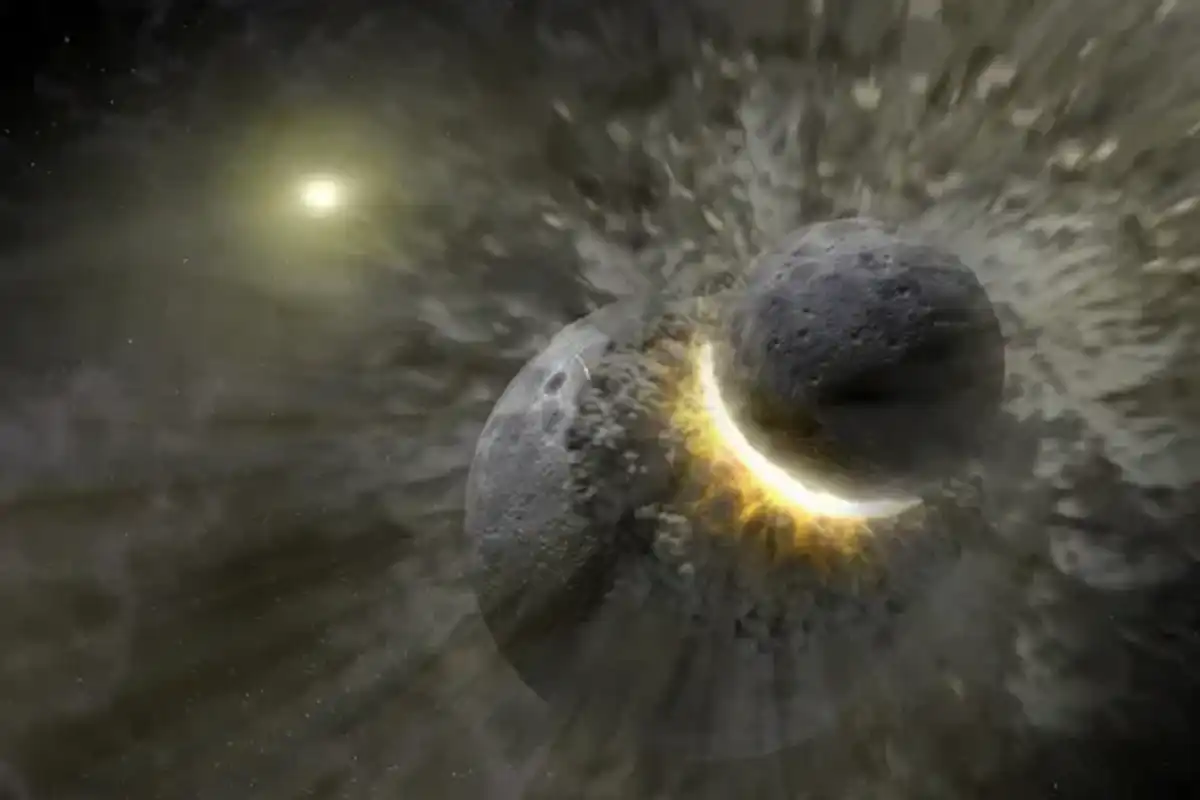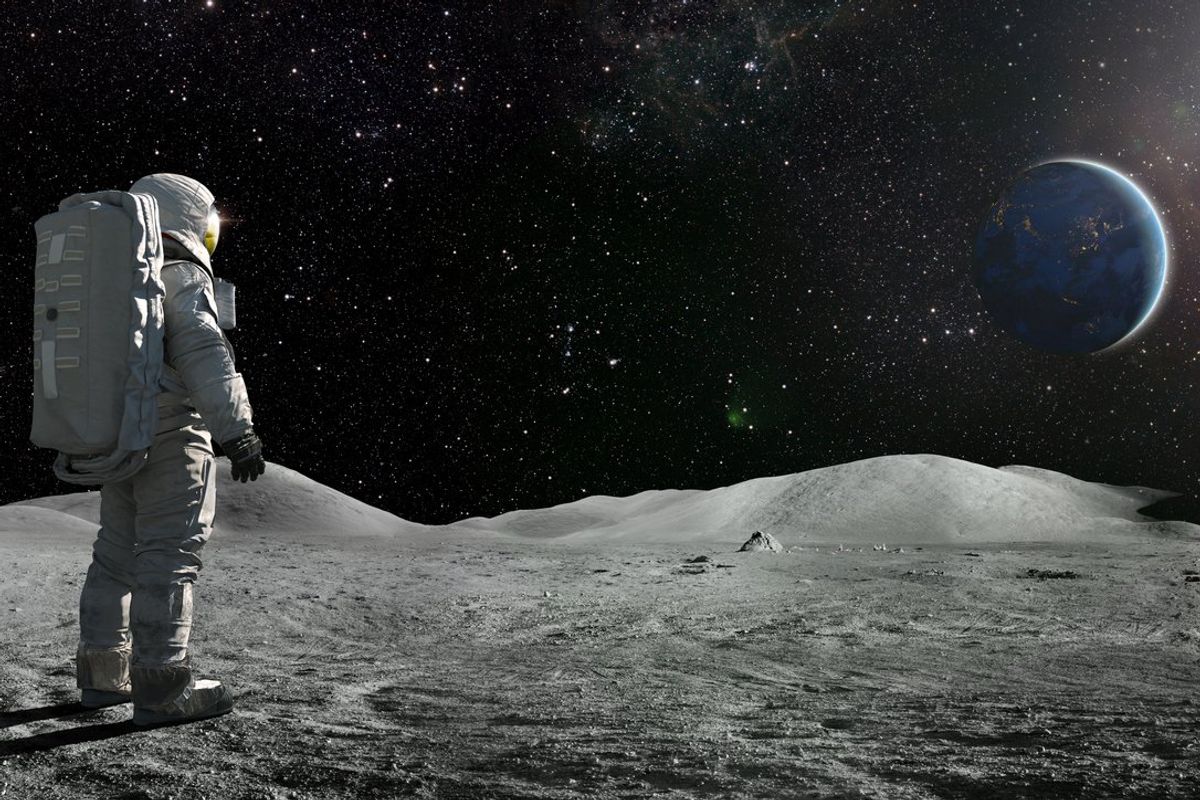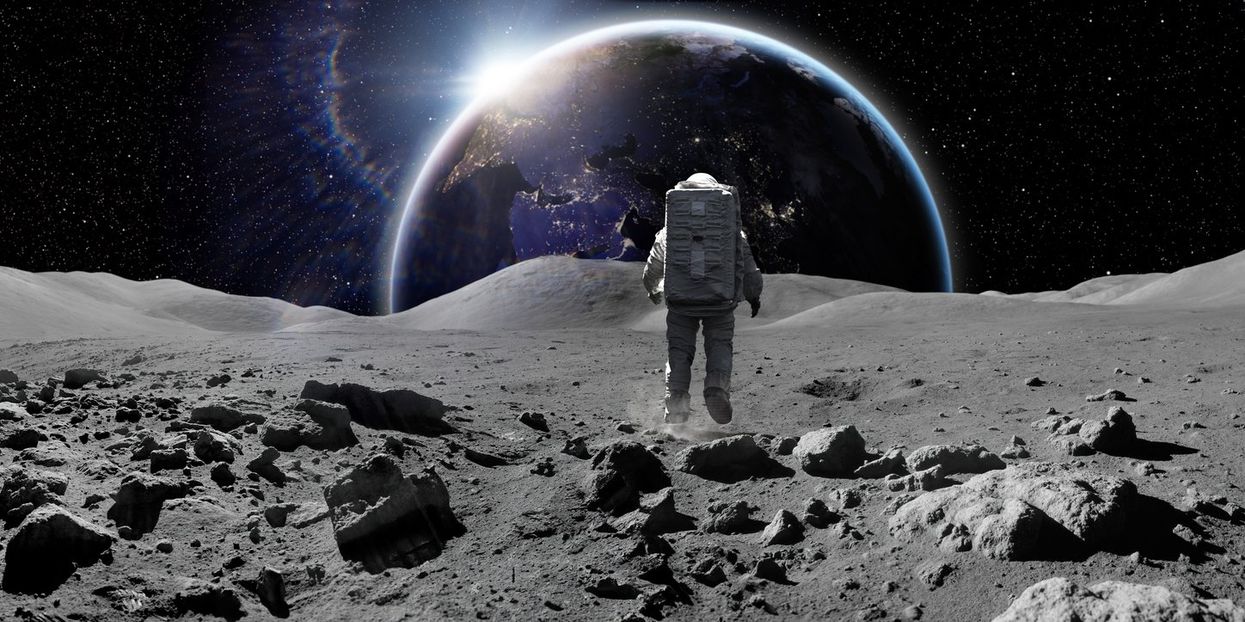Harriet Brewis
Sep 11, 2024
What If the Moon Exploded?
Underknown / VideoElephant
We’ve long been told that the Moon was created when a Mars-sized object named Theia smashed into Earth, hurling material into space which eventually became our beloved celestial companion.
This idea, known as the giant impact hypothesis, helps explain why our planet and the Moon share a number of key properties, for example, identical minerals.
And yet, a new study has poked a massive hole in this widely accepted theory because of one glaring fact: we have zero clear-cut evidence that such a massive impact ever took place.
Planetary scientist Paolo Sossi, who led the groundbreaking research, told ScienceAlert that the key to his team’s new finding lies in rocks from the Earth’s mantle and the Moon.
He explained that the ratio of isotopes found in both specimens are essentially identical, yet “were there any trace of an impactor, we would expect to see small differences.”
Hence, he said: "We argue that, in the event of an impactor, the two bodies must have been perfectly mixed … or the Moon must have formed in a different way."
Admittedly, this doesn’t mean that the giant impact definitely didn’t occur. It just means that we can’t safely conclude that it did.
In other words, the true origins of the Moon remain a mystery.

So if there was no big impact, where did the Moon come from?
Ultimately, there’s a lot to be said for the giant impact hypothesis. After all, things were pretty chaotic when the Solar System was in its infancy some 4.5 billion years ago.
There were plenty of rocks flying around so it's not implausible that our newborn Earth was hit by something like Theia.
The issue, according to Sossi and his team, is that Earth and the Moon are too similar. Numerous elements on Earth and the Moon have ratios of isotopes – different forms of the same atom with varying numbers of neutrons in their nuclei – that are identical, as ScienceAlert notes.
"Initially, this concordance was found only for the isotopes of oxygen, but more recently (since the early 2010s) this has been found to be the case for chromium and titanium – both of which are elements that are concentrated solely in the rocky part of the body," Sossi explained.
"Furthermore, because the isotopes of these elements vary widely among planetary materials, were there any trace of an impactor, we would expect to see small differences in their isotopic ratios. Yet, no such differences between the Earth and the Moon have been detected."
He continued: "This has subsequently also been shown to be true for a host of other elements (e.g., iron, calcium, molybdenum, etc.) making the likelihood that this could have arisen through coincidence astronomically small."
Furthermore, a recent study found that Earth and the Moon are around the same age – or, at least, formed very close together, around 4.5 billion years ago.
These different pieces of evidence have led Sossi to conclude that the pair formed from the same cloud of material, removing the need for any third party – Theia or otherwise – to have been involved.
Indeed, our world and its natural satellite are unique in the Solar System as the only two large spherical bodies with differentiated cores.
In fact, if the Moon – which is not much smaller than Mercury – were floating around on its own in space, it may be considered a planet in its own right, ScienceAlert points out.
The Moon is also credited with playing an important role in the evolution of life here on Earth. This is because it helps stabilise Earth's spin, and generates the tides that help the oceans circulate.
Simply put, our planet would be a very different place without our cherished sidekick.

Will we ever know for sure how the Moon was formed?
Currently, we really don't know how Earth and the Moon emerged from a clump of stardust some 4.5 billion years ago. But Sossi and his colleagues think there are ways to find out.
He believes that the next step is to investigate what's inside the Moon – and that's what his team is now working on.
"The chemical and isotopic evidence is now sufficiently strong to start questioning the fundamental mechanisms of Moon formation," Sossi said.
"We're also pleased to see how interrelated the geophysical, geochemical and dynamical constraints can be in providing a new, holistic view of the formation of the Moon."
He concluded: “We are able to communicate on mutual problems across disciplines, which will ultimately help us in finding a solution to this conundrum."
Sign up for our free Indy100 weekly newsletter
How to join the indy100's free WhatsApp channel
Have your say in our news democracy. Click the upvote icon at the top of the page to help raise this article through the indy100 rankings
Top 100
The Conversation (0)














